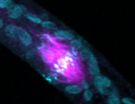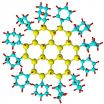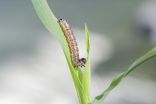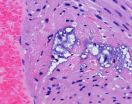(Press-News.org) AMHERST, Mass. – Along with copying and splitting DNA during division, cells must have a way to break safely into two viable daughter cells, a process called cytokinesis. But the molecular basis of how plant cells accomplish this without mistakes has been unclear for many years.
In a new paper by cell biologist Magdalena Bezanilla of the University of Massachusetts Amherst, she and her doctoral student Shu-Zon Wu present a detailed new model that for the first time proposes how plant cells precisely position a "dynamic and complex" structure called a phragmoplast at the cell center during every division and how it directs cytokinesis. The work is reported in the current issue of the journal, eLife.
The complicated cytokinesis process begins at the cell center where the phragmoplast sends out tendrils toward opposite sides of the cell like a belt across its waist. These polymers, microtubules and actin filaments travel tens or hundreds of microns towards the cell wall to a predetermined position where a special structure called the cell plate will form. The new wall making two new cells will take shape along this pathway between the cell plates on opposite walls.
"How this process is directed and accomplished has been a mystery for a very long time," says Bezanilla. But clearly, the scientist adds, microtubules are needed here because without them the cell plate does not form. "And we've known for a very long time that actin filaments are there in the structure, but nobody knew what they were for. What steers phragmoplast expansion at the molecular level was just not understood."
"Our new paper proposes a model showing how plant cells steer their cell division machinery into position and how actin contributes. Our data from experiments in moss and tobacco provide evidence that a protein called myosin VIII, along with actin, guide cytokinesis. It answers what has been an open question in cell biology for decades."
Using a state-of-the-art microscope funded by the Massachusetts Life Sciences Institute at UMass Amherst, she and Wu were able to watch key structures taking shape, label them and make videos of cytokinesis for hours to piece together how actin, microtubules and the structural protein known as myosin VIII cooperate to accomplish proper division.
"What's unique with this myosin is that it can also interact with microtubules and in fact we think the microtubules are its cargo," Bezanilla says. "We think the myosin is pulling the microtubule along an actin filament." Crosstalk between actin and microtubules is something that happens in all cells so this work in plants could have implications in animal cell processes as well, Bezanilla says.
She adds, "Some of these things were just at the edge of being visible. It was quite a feat to be able to image the process for such a long time and to witness a live cell process."
Overall, using a combination of genetics and live-cell imaging to query what guides the phragmoplast, the scientists identified actin and actin-based molecular motors, the class VIII myosins, as a key to the steering mechanism for cytokinesis in these plant cells. Their paper describes step by step how it unfolds.
INFORMATION: END
Unlocking long-hidden mechanisms of plant cell division
UMass Amherst cell biologists propose new, more detailed cytokinesis model
2014-09-25
ELSE PRESS RELEASES FROM THIS DATE:
Risk of esophageal cancer decreases with height
2014-09-25
Bethesda, MD (Sept. 25, 2014) — Taller individuals are less likely to develop esophageal cancer and it's precursor, Barrett's esophagus, according to a new study1 in Clinical Gastroenterology and Hepatology, the official clinical practice journal of the American Gastroenterological Association.
"Individuals in the lowest quartile of height (under 5'7" for men and 5'2" for women) were roughly twice as likely as individuals in the highest quartile of height (taller than 6' for men and 5'5" for women) to have Barrett's esophagus or esophageal cancer," said Aaron P. Thrift, ...
Putting the squeeze on quantum information
2014-09-25
CIFAR researchers have shown that information stored in quantum bits can be exponentially compressed without losing information. The achievement is an important proof of principle, and could be useful for efficient quantum communications and information storage.
Compression is vital for modern digital communication. It helps movies to stream quickly over the Internet, music to fit into digital players, and millions of telephone calls to bounce off of satellites and through fibre optic cables.
But it has not been clear if information stored in quantum bits, or qubits, ...
Looking for a spouse or a companion
2014-09-25
New Rochelle, NY, September 25, 2014—The increasing popularity of social media, online dating sites, and mobile applications for meeting people and initiating relationships has made online dating an effective means of finding a future spouse. The intriguing results of a new study that extends this comparison of online/offline meeting venues to include non-marital relationships, and explores whether break-up rates for both marital and non-marital relationships differ depending on whether a couple first met online or offline are reported in an article in Cyberpsychology, ...
World's smallest reference material is big plus for nanotechnology
2014-09-25
If it's true that good things come in small packages, then the National Institute of Standards and Technology (NIST) can now make anyone working with nanoparticles very happy. NIST recently issued Reference Material (RM) 8027, the smallest known reference material ever created for validating measurements of these man-made, ultrafine particles between 1 and 100 nanometers (billionths of a meter) in size.
RM 8027 consists of five hermetically sealed ampoules containing one milliliter of silicon nanoparticles—all certified to be close to 2 nanometers in diameter—suspended ...
A galaxy of deception
2014-09-25
Astronomers usually have to peer very far into the distance to see back in time, and view the Universe as it was when it was young. This new NASA/ESA Hubble Space Telescope image of galaxy DDO 68, otherwise known as UGC 5340, was thought to offer an exception. This ragged collection of stars and gas clouds looks at first glance like a recently-formed galaxy in our own cosmic neighbourhood. But, is it really as young as it looks?
Astronomers have studied galactic evolution for decades, gradually improving our knowledge of how galaxies have changed over cosmic history. ...
The ideal age of sexual partners is different for men and women
2014-09-25
New evolutionary psychology research shows gender differences in age preferences regarding sexual partners.
Men and women have different preferences regarding the age of their sexual partners and women's preferences are better realized than are men's. Regarding the age of their actual sexual partners, the difference is however much smaller. Researchers in psychology at Åbo Akademi University in Turku, Finland, suggest that this pattern reflect the fact that when it comes to mating, women control the market.
Grounding their interpretation in evolutionary theory, the ...
Playing tag with sugars in the cornfield
2014-09-25
This news release is available in German. Sugars are usually known as energy storage units in plants and the insects that feed on them. But, sugars may also be part of a deadly game of tag between plant and insect according to scientists at the Max Planck Institute for Chemical Ecology. Grasses and crops such as maize attach sugars to chemical defenses called benzoxazinoids to protect themselves from being poisoned by their own protective agents. Then, when an insect starts feeding, a plant enzyme removes the sugar to deploy the active toxin. The Max Planck scientists ...
Brazilian zoologists discovered the first obligate cave-dwelling flatworm in South America
2014-09-25
Typical cave-dwelling organisms, unpigmented and eyeless, were discovered in a karst area located in northeastern Brazil. The organisms were assigned to a new genus and species of freshwater flatworm and may constitute an oceanic relict. They represent the first obligate cave-dwelling flatworm in South America. The study was published in the open access journal ZooKeys.
Freshwater flatworms occur on a wide range of habitats, namely streams, lagoons, ponds, among others. Some species also occur in subterranean freshwater environments.
Brazil has more than 11,000 caves, ...
Water research tackles growing grassland threat: Trees
2014-09-25
MANHATTAN — Two Kansas State University biologists are studying streams to prevent tallgrass prairies from turning into shrublands and forests.
By looking at 25 years of data on the Konza Prairie Biological Station, Allison Veach, doctoral student in biology, Muncie, Indiana, and Walter Dodds, university distinguished professor of biology, are researching grassland streams and the expansion of nearby woody vegetation, such as trees and shrubs. They have found that burn intervals may predict the rate of woody vegetation expansion along streams.
Their latest research ...
Pneumonia bacterium leaves tiny lesions in the heart, study finds
2014-09-25
SAN ANTONIO (Sept. 25, 2014) — The long-observed association between pneumonia and heart failure now has more physical evidence, thanks to research in the School of Medicine at The University of Texas Health Science Center at San Antonio.
The researchers found proof that Streptococcus pneumoniae, the leading cause of community-acquired pneumonia, actually physically damages the heart. The bacterium leaves tiny lesions that researchers detected in mouse, rhesus macaque and human autopsy tissue samples.
"If you have had severe pneumonia, this finding suggests your heart ...
LAST 30 PRESS RELEASES:
Numbers in our sights affect how we perceive space
SIMJ announces global collaborative book project in commemoration of its 75th anniversary
Air pollution exposure and birth weight
Obstructive sleep apnea risk and mental health conditions among older adults
How talking slows eye movements behind the wheel
The Ceramic Society of Japan’s Oxoate Ceramics Research Association launches new international book project
Heart-brain connection: international study reveals the role of the vagus nerve in keeping the heart young
Researchers identify Rb1 as a predictive biomarker for a new therapeutic strategy in some breast cancers
Survey reveals ethical gaps slowing AI adoption in pediatric surgery
Stimulant ADHD medications work differently than thought
AI overestimates how smart people are, according to HSE economists
HSE researchers create genome-wide map of quadruplexes
Scientists boost cell "powerhouses" to burn more calories
Automatic label checking: The missing step in making reliable medical AI
Low daily alcohol intake linked to 50% heightened mouth cancer risk in India
American Meteorological Society announces Rick Spinrad as 2026 President-Elect
Biomass-based carbon capture spotlighted in newly released global climate webinar recording
Illuminating invisible nano pollutants: advanced bioimaging tracks the full journey of emerging nanoscale contaminants in living systems
How does age affect recovery from spinal cord injury?
Novel AI tool offers prognosis for patients with head and neck cancer
Fathers’ microplastic exposure tied to their children’s metabolic problems
Research validates laboratory model for studying high-grade serous ovarian cancer
SIR 2026 delivers transformative breakthroughs in minimally invasive medicine to improve patient care
Stem Cell Reports most downloaded papers of 2025 highlight the breadth and impact of stem cell research
Oxford-led study estimates NHS spends around 3% of its primary and secondary care budget on the health impacts of heat and cold in England
A researcher’s long quest leads to a smart composite breakthrough
Urban wild bees act as “microbial sensors” of city health.
New study finds where you live affects recovery after a hip fracture
Forecasting the impact of fully automated vehicle adoption on US road traffic injuries
Alcohol-related hospitalizations from 2016 to 2022
[Press-News.org] Unlocking long-hidden mechanisms of plant cell divisionUMass Amherst cell biologists propose new, more detailed cytokinesis model







